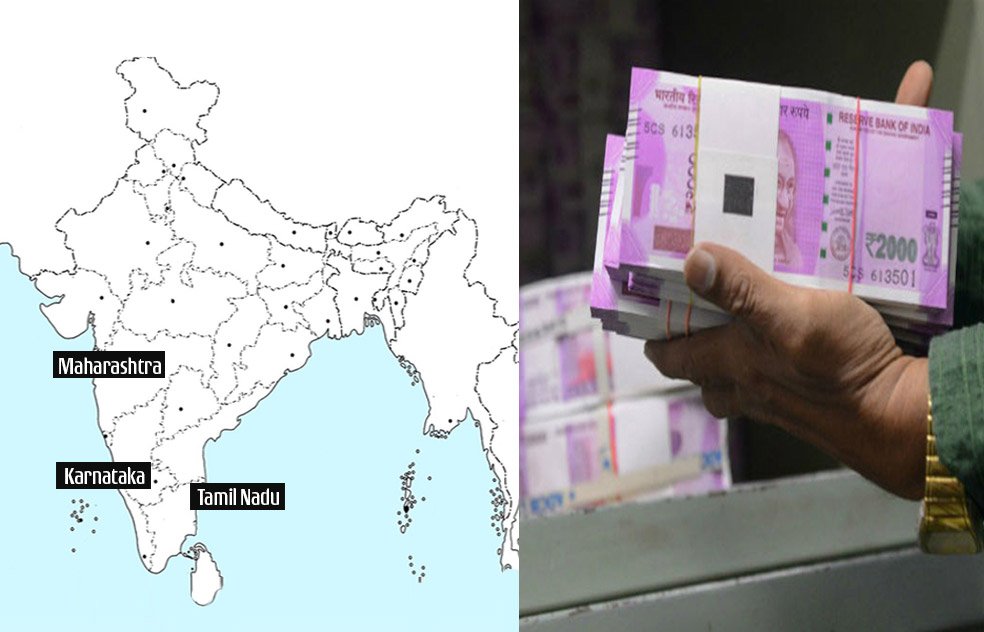
3 States' Contribution To India’s GDP Higher Than That Of 20 States Combined
11 April 2017 5:33 AM GMT
India is a country of different colours with varying intensities, and this can also be seen in the contribution made by each of the 29 states to the national GDP.
Breaking up GDP
GDP, which is Gross Domestic Product is a monetary measure of the market value of all final goods and services produced in a period (quarterly or yearly). It is a primary indicator of the health of a country’s economy. For determining the GDP, mainly two approaches are followed: income approach and expenditure method. But both the measures should arrive at roughly the same result.
The Indian Scenario
The GDP of India is $2.25 trillion (nominal) and $8.72 trillion by Purchasing Power Parity. The GDP growth rate for the year 2016 was around 7%.
The Indian GDP is measured by using Gross Value Added (GVA) at market price rather than the factor cost. There is a disparity in the distribution of the GDP among the Indian states. The three top states – Maharashtra, Tamil Nadu, and Karnataka – are leading with an estimate of total $778 billion.
Maharashtra, the richest state when it comes to GDP, has a diversified economy. It owes its success to international trade, mass media (television, movies, video games, and music), aerospace, technology, petroleum, fashion, apparel, and tourism. Many corporate institutions have their headquarters in Mumbai, which is also India’s financial capital. The state’s share markets transact 70% of the country’s stocks. The service sector dominates the economy of Maharashtra. Maharashtra also ranks first nationwide in coal-based thermal electricity as well as nuclear electricity generation with national market shares of over 13% and 17% respectively.
Tamil Nadu leads the second position with its large-scale production of agricultural products. In 2014-2015, the state recorded a GDP of US$150 billion. Chennai is the second leading software exporter in India. Companies like Cognizant, Covansys, Xansa, Verizon, iSoft, Invensys, Schneider Electric, and many others are Chennai-based.
Karnataka has recorded the highest growth rates regarding GDP and per capita GDP in the last decade when compared to other states. Agriculture, industry and services contribute 13%, 24% and 63% of the state’s economy respectively. Karnataka is also the leader in the information technology sector in India and its capital Bengaluru is known as the Silicon Valley of India.
Disparity over the years
The economic disparity within India’s states is among the largest in the world. In 1960, the average person in West Bengal earned Rs 390 per annum while the average person in Tamil Nadu earned Rs 330. But in 2014, the average Bengali earned Rs 80,000 while the average Tamilian earned Rs 1,36,000. Tamil Nadu went from being the fourth poorest state in 1960 to the second richest in 2014. The southern states of Kerala, Tamil Nadu, and Karnataka have risen rapidly while northern states like West Bengal and Rajasthan have dropped down the order of the richest big states.
Most of these states had the same GDP in 1960, but the situation seems very different now. In 1960, the top three states were 1.7 times richer than the bottom three. By 2014, this gap had almost doubled, with the major three States being three times richer than the bottom three. In 1960, Maharashtra was twice as rich as Bihar (the poorest state then). In 2014, Kerala was four times richer than Bihar, still the poorest.
This gap between the richest and the poorest large states in India is among the highest in the world. Economic theories suggest that the poorer regions grow faster to catch up with the richer states but in India, the trend of increasing disparity still continues.
Also read:
Which State Is A Model State For India? Gujarat, Maharashtra, Tamilnadu Or Kerala?
 All section
All section













